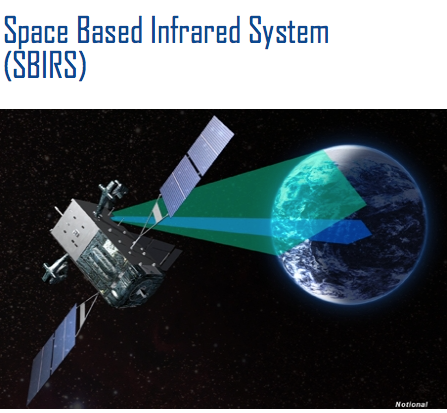[SatNews] Once a satellite is launched then the work begins in space.
LOS ANGELES AIR FORCE BASE, El Segundo, Calif. - The Air Force has successfully completed the on-orbit checkout of the third Space Based Infrared System (SBIRS) sensor operating in a highly elliptical orbit (HEO-3) over the northern hemisphere.
HEO-3 was launched in 2014 on a host satellite. HEO-3 is the first major delivery from the SBIRS Follow-on Production contract, which also includes the third and fourth SBIRS geostationary satellites and the fourth HEO payload.

Lockheed Martin
"This truly was a monumental effort by our Contractor, Government, and Aerospace team. I am extremely proud of the hard work and perseverance of the launch team, the operations team and the countless other professionals whose dedication to the warfighter made this success possible," said Lt. Gen. Samuel Greaves, the Space and Missile Systems Center (SMC) commander.
"With the successful on-orbit checkout of this payload, SMC has once again delivered on our commitment to the warfighter. This sensor is a critical component of the on-orbit constellation of Missile Warning sensors, and enhances the combined constellations of Defense Support Program (DSP) and SBIRS satellites."
The SBIRS program is managed by the Remote Sensing Systems Directorate at the U.S. Air Force Space and Missile Systems Center. Lockheed Martin Space Systems Company, Sunnyvale, California, is the SBIRS prime contractor, and Northrup Grumman Electronic Systems, Azusa, Californina, is the payload integrator.
The 460th Space Wing at Buckley AFB in Aurora, Colorado, operates the SBIRS system. The SBIRS program delivers timely, reliable and accurate missile warning and infrared surveillance information to the President of the United States, the Secretary of Defense, Combatant Commanders, the intelligence community and other key decision makers. The system enhances global missile launch detection capability, supports the nation's ballistic missile defense system, expands the country's technical intelligence gathering capacity and bolsters situational awareness for warfighters on the battlefield.
Lockheed Martin explains:
SBIRS, considered one of the nation’s highest priority space programs, is designed to provide global, persistent, infrared surveillance capabilities to meet 21st century demands in four national security mission areas:
Missile Warning
- SBIRS will provide reliable, unambiguous, timely and accurate warning for theater and strategic missile launches to the President of the United States, the Secretary of Defense, Combatant Commanders, and other users
Missile Defense
- The system will deliver critical information supporting the effective operation of missile defense systems against national and theater threats
Technical Intelligence
- SBIRS will provide the ability to characterize infrared (IR) event signatures, phenomenology, and threat performance data for strategic and operational combatant commanders, the intelligence community, and others
Battlespace Awareness
- The SBIRS constellation will deliver comprehensive infrared data to Combatant Commanders, Joint Task Force Commanders and other users to help characterize battlespace conditions supporting force protection, strike planning and other missions.

